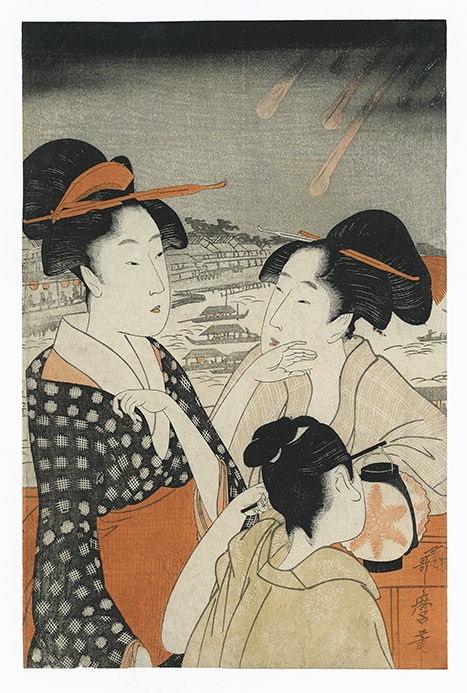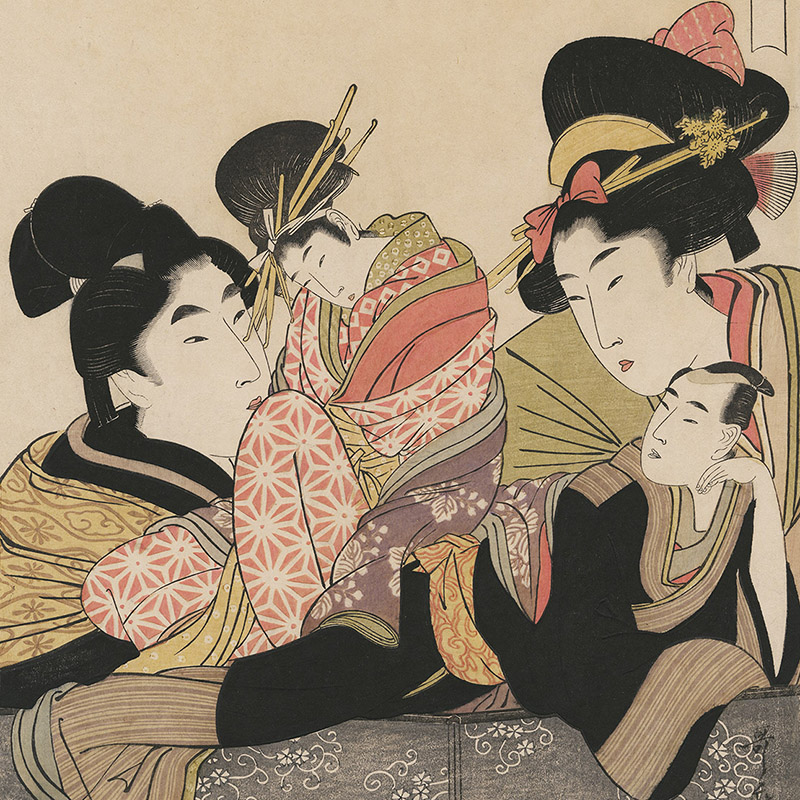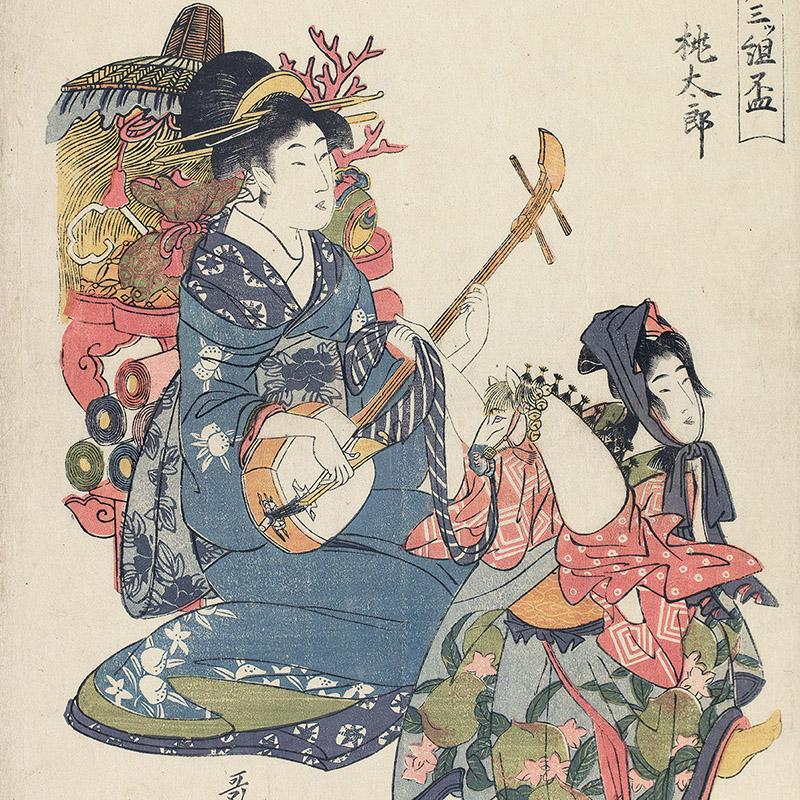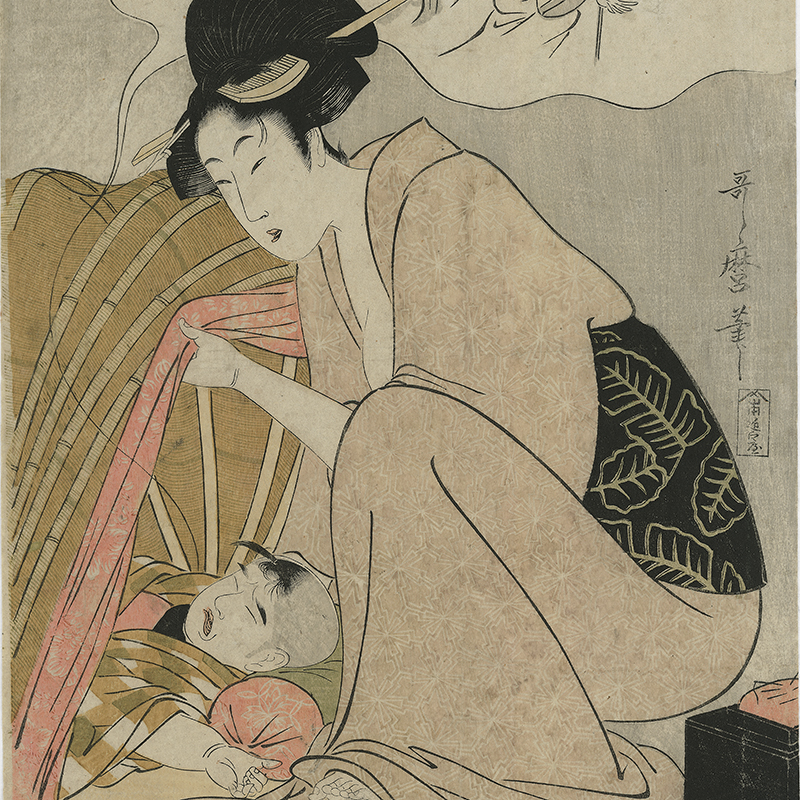Kitagawa Utamaro
1753 - 1806
c. 1800
Vertical ôban, 365 x 240 mm
Signed: Utamaro hitsu
Mark of the publisher: Tsutaya Jūzaburō
This is the left sheet of a triptych; the right and center sheets are in the Tokyo National Museum collection. See, for the other two sheets, Ukiyo-e shûka 15 (1980), p. 237, reference figs. 65-6.
Very good impression and colour; application of mica powder on the fires in the sky. Some unobtrusive thinning of the paper on the verso, slightly trimmed on the right side; generally in very good condition.
Another impression of this print is in Boston at the Museum of Fine Arts (accession number 21.6401).
Information on the master
KITAGAWA UTAMARO
c. 1753 - 1806
The most celebrated artist of women of the whole Ukiyo-e school, Utamaro was a disciple of the painter Toriyama Sekien, an artist originally trained by the painting school of Kano. Utamaro's first major artistic work was the cover for a book on Kabuki plays, in 1775, that he published under the name of Toyoaki. To this, several kabuki related works followed. He adopted the name of Utamaro in 1781, starting then to produce women portraits. He joined the publisher Tsutaya Juzaburo, probably in 1783, and became the main artist in his atelier. With Tsutaya Utamaro's work blossomed steadily during the 1780s. He strove hard to develop a fresh and cool new depiction of women, and after a period during the late 1780s and early 90s when he concentrated on illustrated albums and sets of prints inscribed with kyoka poems, he managed to establish his own unique style and replace Kiyonaga as the premier designer of prints of women. He excelled at sensuous depictions, capturing the most delicate nuances of female emotional states, in a very different manner from Kiyonaga. The death of Tsutaya Juzaburo in 1797 deeply affected Utamaro and his creativity suffered. In 1804 he faced serious problems with the authorities, who considered that some of his prints offended the Shogunate. He was imprisoned and sentenced to 50 days in handcuffs. He died two years later.
Other works of the master



